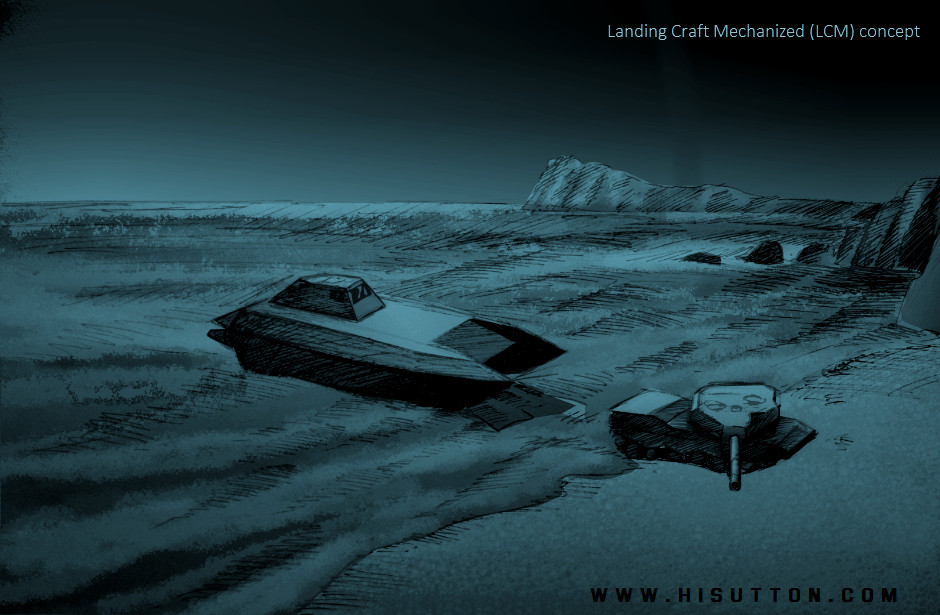 New Concept: Low Profile Landing Craft
New Concept: Low Profile Landing Craft
I can now share an overview of a project which I am directly involved in.
It used to be the case that operating at night was enough to give professional operators the advantage over irregular and conscript forces. But the proliferation of surveillance and targeting technology, often paired with medium anti-tank missiles, has started to close that chapter. Therefore the Low Profile Landing Craft (LP-LC) incorporates signature reducing features in the infrared, radar, visual, acoustic and electronic warfare spectrums.
Unlike the high speed surface vessels often used by Special Forces the LP-LC presents a minimal profile as it creeps towards the enemy coast trimmed down with sea water ballast. And unlike stealthier Swimmer Delivery Vehicles (SDVs) the dry interior ensures that the teams disembark combat-ready. And of course it is at near-atmospheric pressure so there will be no need for decompression as the teams transfer ashore or to other vessels.
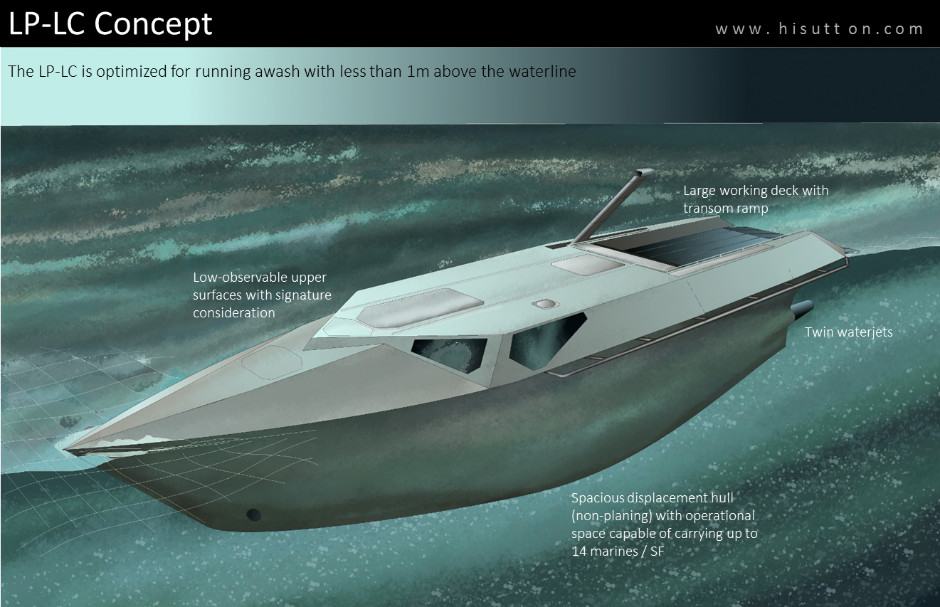
The LP-LC addresses limitations of current special forces surface and subsurface craft. It is the result of discussions with NATO units who are considering more discrete means of landing forces in medium/high risk environments. The requirement covers several roles:
- Insertion and extraction of Special Forces for recce and cross-beach missions
- Landing of Special Forces or commando forces (Marines/ Naval Infantry) for recce and raiding in support of amphibious operations. This includes neutralization of enemy air defenses and other high-threat systems in the immediate vicinity of the landing beach
- Inshore ISR (Intelligence, Surveillance and Reconnaissance) missions
- Certain counter-terrorism (CT) missions
The ability to carry up to 14 fully equipped troops provides elite amphibious units (Maries, Naval Infantry, Commandos) with levels of discretion currently only enjoyed by very few Special Forces units.
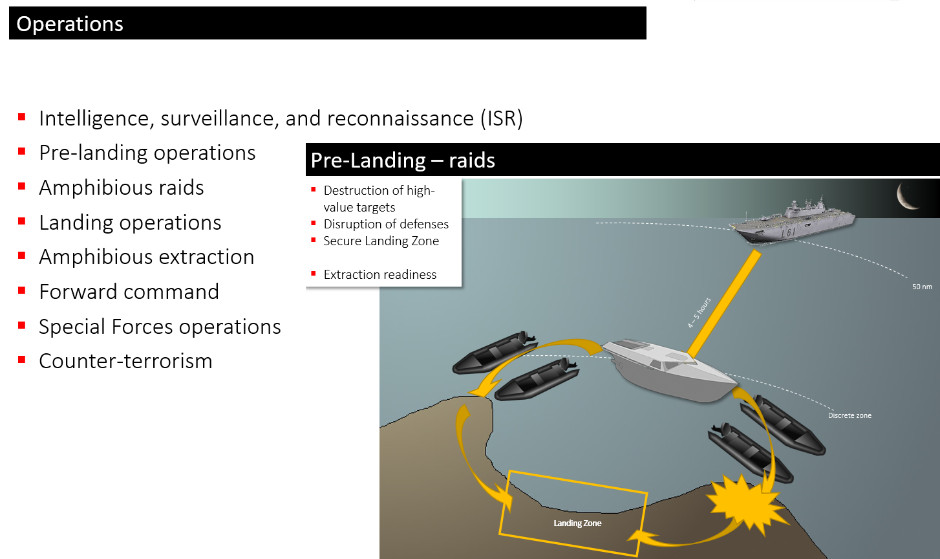
The top-tier of maritime orientated Special Forces are able to deploy covertly from submerged submarines. This the pinnacle of Special Forces capabilities. It is at the same time a compromise for both the Special Forces units and the submarine involved. Therefore the current trend towards Special Forces surface vessels is partly driven by the desire to free the Special Units and the submarines from each other. Additionally they are accessible to countries with insufficient submarines (or none), and to units which do not have the time or resources to operationalize complex underwater capabilities. And they have many other advantages including independent shore-to-shore capabilities, and being crewed by the unit in question or aligned specialist units (e.g. Marines or Special Boat Units). The disadvantage of course is that surface vessels are much less discrete than divers and SDVs (Swimmer Delivery Vehicles) deployed by host submarines.
There exists a sweet spot between Special Forces surface craft and SDVs. Inherently stealthier than the former, and cheaper, more flexible and operationally simpler than the latter. Enter the LP-LC.
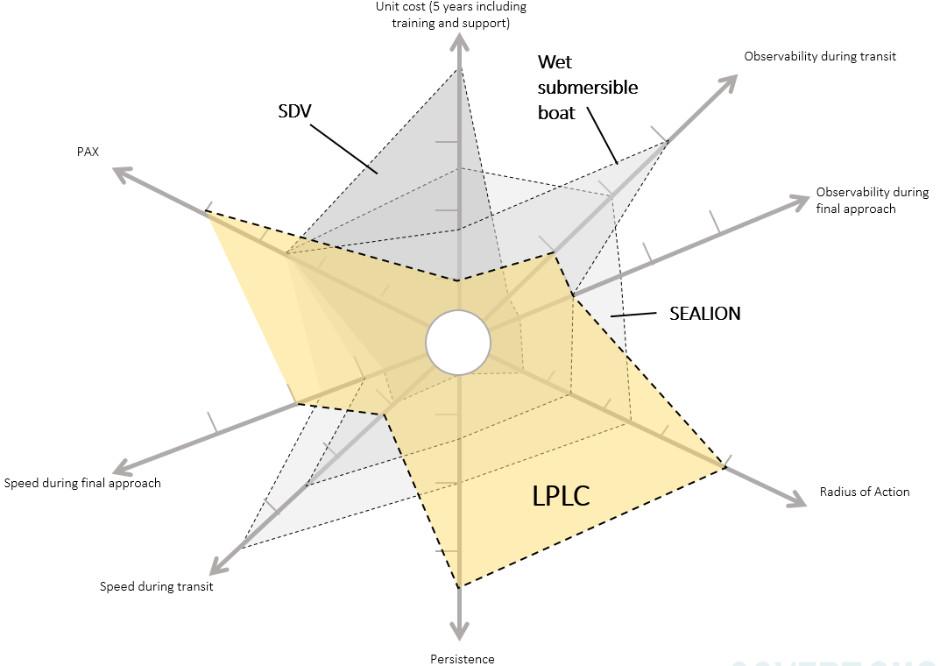
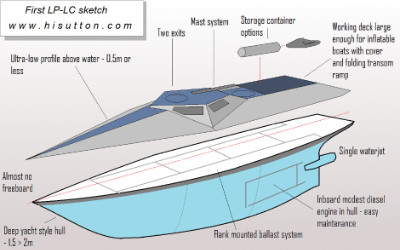 The interior is at near-atmospheric pressure so no decompression is required when the teams transfer ashore or to other vessels. The LP-LC can approach to within swimming distance of the shore, and powered inflatable boats, kayaks or DPVs (Diver Propulsion Vehicles) can be launched from the stern. It is an ideal platform for UUVs (Unmanned Underwater Vehicles) and UAVs (Unmanned Air Vehicles).
The interior is at near-atmospheric pressure so no decompression is required when the teams transfer ashore or to other vessels. The LP-LC can approach to within swimming distance of the shore, and powered inflatable boats, kayaks or DPVs (Diver Propulsion Vehicles) can be launched from the stern. It is an ideal platform for UUVs (Unmanned Underwater Vehicles) and UAVs (Unmanned Air Vehicles).
There are a number of clear advantages for the LP-LC relative to SDVs and midget subs. A single LP-LC can land or recover up to 14 persons, far in excess of SDVs. And multiple LP-LCs can operate together to support a larger force. Passengers need minimum training compared to SDVs and midget subs, making the LP-LC suitable for a greater range of missions than more specialist craft. And during extraction, the teams can be debriefed and rested before reaching home. Vitally, basic medical care can be carried out onboard.
Mechanical and electrical simplicity translates into much better safety margins than true submersibles. Maintenance is largely similar to other small surface vessels with only the military comms/sensors and plumbing systems requiring specialist skills.
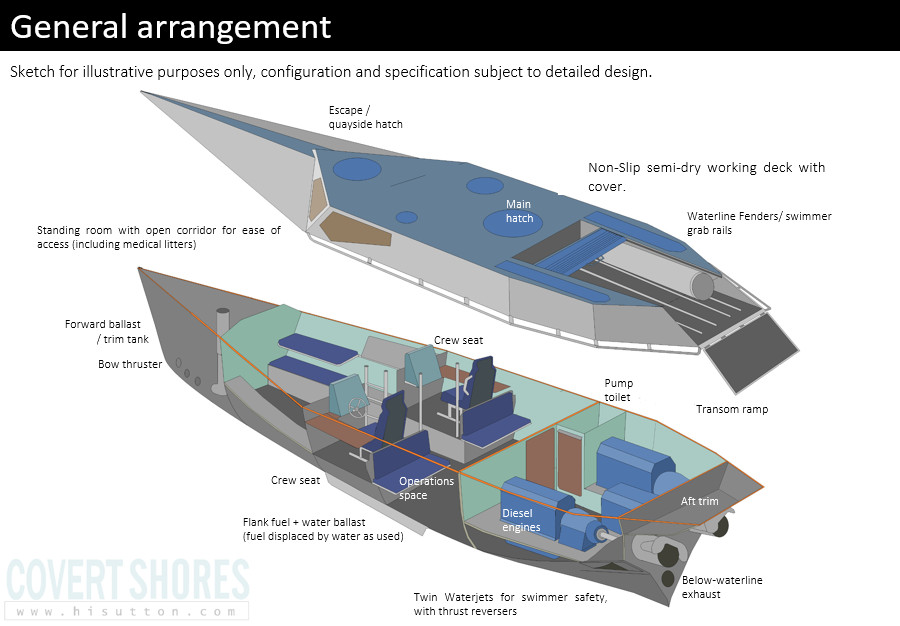
The LP-LC is designed with the practicalities of operations in mind; the spacious interior provides ample room for 14 PAX with hot-bunking, mess and operations space for multi-day missions as required. The guiding principle is that the internal space should be highly configurable, allowing operators sufficient rest and comfort for extended operation. This is in stark contrast to SDVs and most Special Operations surface craft. There is sufficient headroom for passengers to move around without crouching, a major factor in operator fatigue. Amenities such as sink, microwave, pump toilet and table with similar dimensions to those in cabin yachts can be installed. The separate Operations Space allows part of the contingent to be planning, eating or preparing gear while others are resting in the forward compartment. While the Operations Space is ideal for dressing divers and packing and checking kit.
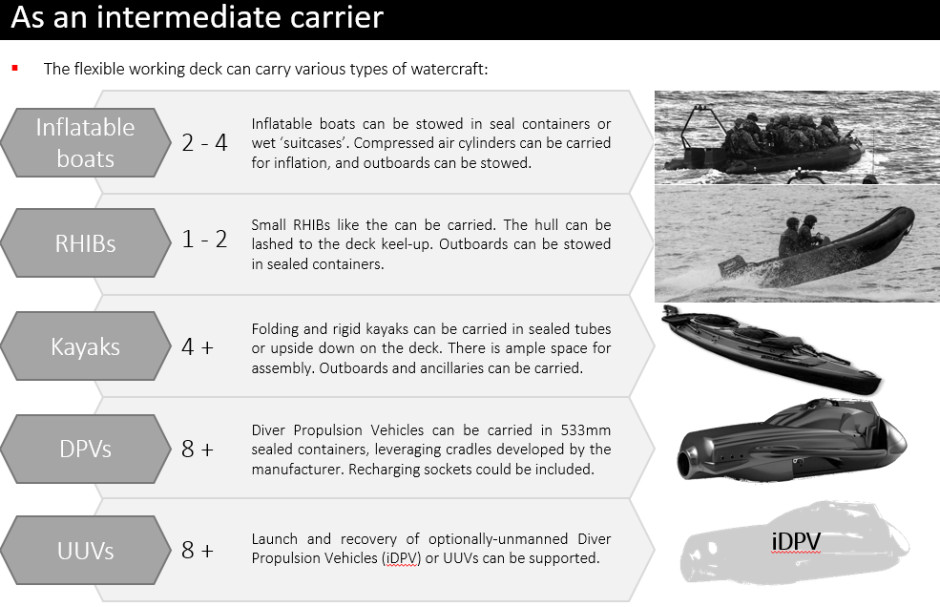
The slow and stealthy mission profile removes the complexity of incorporating a high-speed surface-planning hull. Therefore the entire mission can be conducted while running awash to minimize the risk of detection. Multiple folding masts and snort systems are carried beside the working deck.
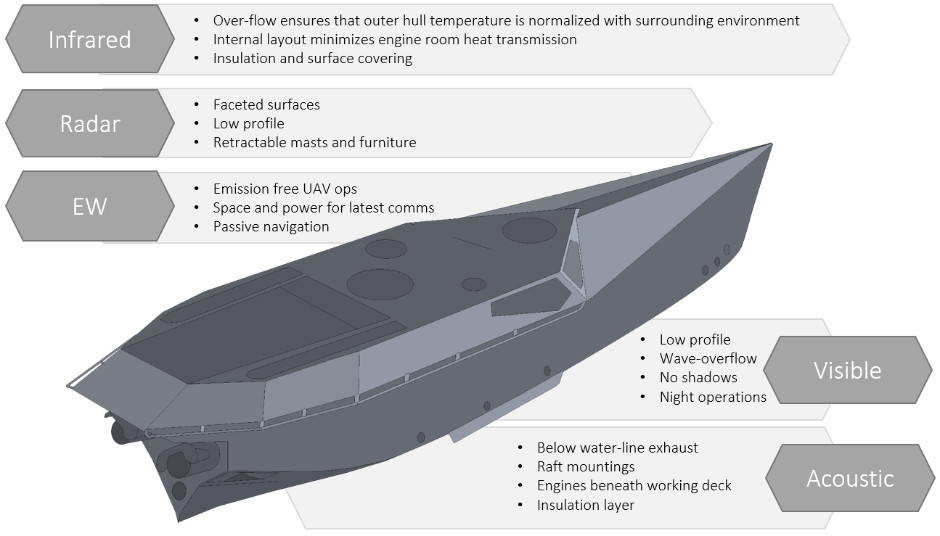
Want to know EVERYTHING about SEAL Delivery Vehicles? Covert Shores 2nd Edition. A world history of naval Special Forces, their missions and their specialist vehicles. SEALs, SBS, COMSUBIN, Sh-13, Spetsnaz, Kampfschwimmers, Commando Hubert, 4RR and many more.
Check it out on Amazon
Discrete LCM Concept
Pre-landing amphibious raids to neutralize key threats would greatly benefit from being able to land a tank as part of the raiding force. The medium landing craft (LCM) available are not stealthy are vulnerable to anti-tank missiles and other basic defenses. The semi-submerged LP-LC is also not suitable for landing heavy vehicles. Therefore the concept is to make a LCM stealthy enough to operate within the discrete zone during pre-landing operations. The discrete-LCM would not be as low profile as the LP-LC but against many real world enemies t would shift the balance back in favor of the professional marines/naval infantry unit.
